
Welcome to the amigurumis world!. In this tutorial we will see the Materials and Accessories to crochet Amigurumis!
Surely you’ve seen many crocheted adorable amigurumis and you’ve wanted to do them, but you thought it was very complicated.

I want to show you that this is not the case and that the amigurumis are suitable for everyone.
Join me on this trip and I’ll show you!
First of all you should feel comfortable with your tools, mainly with the crochet hook and the thread or wool you are going to use.
This is important for the time you have to spend crocheting.
Find a bright place, sit correctly, with a straight back, take the hook properly, are small details that can prevent common injuries when it comes to executing repetitive movements.
Take the hook and thread properly
I confess that many times my personal comfort is at odds with these tips and I do not follow some of them.
For example, my way of holding the hook is not the most normal, but I feel comfortable and the result is good.
With this, what do I want to say ?… Well, you should not put limits when it comes to crocheting.
You must find a way that is comfortable and easy for you, which may not be the correct one according to the most purist, but if it works for you and makes your task easier, go ahead.
Throughout our journey you will understand better what I mean.
Materials
As I said, to start crocheting we need to have our work tools ready. Mine are:
- Wool.
- Crochet hook.
- Fiberfill.
- Row marker.
- yarn needle, pins and scissors.
![]()
1. Wool
If you are starting to crochet and discover the world of amigurumis, in principle you should not be very demanding about wool.
Naturally, doubts and inexperience will make you do it wrong, and you will have no choice but to crochet and re-crochet again and again.
Acrylic or cotton?
I recomend you acrylic yarn, cheap and that you can find easily in your environment. Nowadays the quality of said wool is good, it is soft, versatile and washable.
Thickness of wool:
The thickness of the wool is directly related to the hook that we are going to use.
Normally the patterns indicate the proper thickness of the yarn or wool you should use.
We must follow this recommendation or otherwise we run the risk that the doll is too big, small or even lacks the consistency necessary to maintain its shape.

In my amigurumis I use:
- Wool of a very common thickness (3 mm) for the basic pieces.
- Thinner wool or embroidery thread for small details.
- Thicker wool for specific elements such as some strands of hair.
The Thickness of 3 mm allows me to easily make amigurumis of different sizes without limiting myself too much in terms of shaping them when they are small designs and without tire out on big ones.
Color range:
Finally, we will take into account the range of colors, the more we have at our disposal, the better.
Although to crochet a specific pattern do not need too many, the fact of the wool brand has a wide range will make things easier when choosing and in a short time will allow you to have at home a wide variety with which you can crochet practically any pattern.
When you have enough experience, this will allow you to change to a better quality wool.
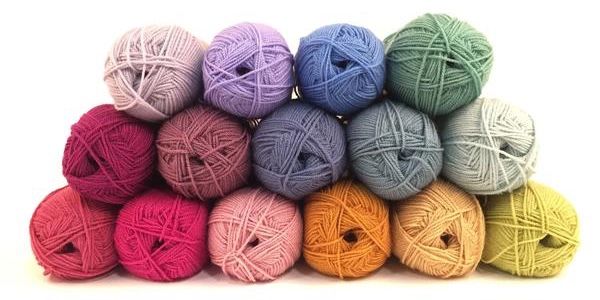
2. Crochet Hook
I will not subject you to a tedious explanation about all varieties of size, materials and ergonomic aspects of the crochet hooks.
First, because I do not know all the options of the market and second because it seems incredible the amount of innovations that can be in something as simple as a “stick” with a hook at the tip.
If some even have built-in light!

The most appropriate hook and the one I use.
As I said, the thickness of the thread or wool is in relation to the hook that we must use and vice versa, but we will not complicate with numbers.
It is enough to know that the hook that we have to use must be less than that recommended by the wool used.
The one I use, the one I like the most and the one I’m used to (except for some exceptions), is a classic aluminum number 3 hook, about 2 mm.

3. Fiberfill
It is the material that we use to introduce in the amigurumis, give them volume and make them “blanditos”.
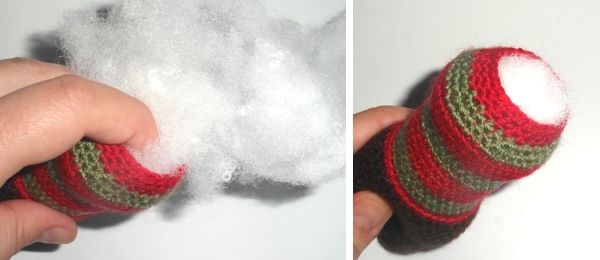
We can find it in different quantities and qualities, associated with a higher or lower price.
Like wool, as beginners we should not be obsessed with acquiring a quality material, hypoallergenic and that supposes us an unnecessary economic waste.
However, it is something essential and more important than we think so we can not be satisfied with whatever either.
It must be a material:
- Soft, of cottony appearance, which does not form lumps and gives rise to unwanted bulges in the fabric.
- Light, but moldable, that is, that adapts to the shape of the doll and does not cause deformations.
- Washable, and that after drying is not damaged, but maintain its original texture.
In my case, after much searching and testing, I have been lucky enough to find an economic material that meets these requirements.
It is the stuffing of cushions without a cover that we can easily find in many bazaars.
4. Row Marker
It is the element that we need to engage in the weaving and know at what stitch ends one round and starts the next.
Let’s see why:
The amigurumis are crocheted fundamentally in round, with two techniques:
1. The traditional technique:
By which we crochet in a round, making a chain and a single crochet on it when we reach the end of the round and start a new one, which will rise above the previous one.
This allows us to perfectly distinguish the start of each round, which makes unnecessary the use of a marker.
- In favor: Through this technique we manage to make a change of color in a clean way, without unevenness in the row.
- Against: Leave a small mark on the weave that makes it look slightly ugly.
2. The spiral technique:
By which we crochet in continuous rounds, one after another, in such a way that we can not differentiate the end of one and the beginning of another, unless we mark it out on the corresponding stitch.
- In favor: is the technique par excellence to crochet the amigurumis, because the final result is more beautiful.
- Against: those uneven color changes that uglify the design.
As a row marker we can use any kind of element that fulfills the function of remaining stuck in the fabric signaling the final stitch of the round.
We can find them of many types and colors, even with a rounds counter.
We can also use other resources that we have on hand as a safety pin, a paperclipor even a piece of yarn that we knot on the stitch we need to mark.

I use my patterns knotted colored yarn pieces to mark, not the end of the row, but certain segments within the weave.

This allows me to extrapolate the marked segment to future rows and by not being hard it facilitates the handling of the piece.
5. Yarn needle, pins and scissors
They are the materials we need to sew the different parts of our amigurumis.
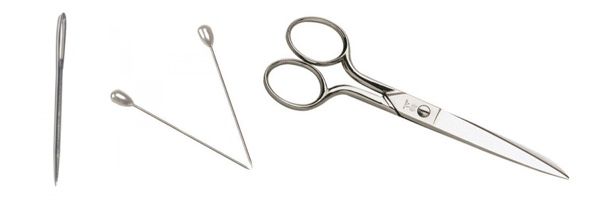
Although a normal-sized yarn needle for sewing is all we need, I recommend you get several needles of different sizes and thicknesses.
The finish of our amigurumis will be better and we will find it easier to sew certain parts if we have the right size needle for each occasion.
We will use the pins to secure each piece in place, see how it looks and if it is placed correctly, to be able to sew easily.

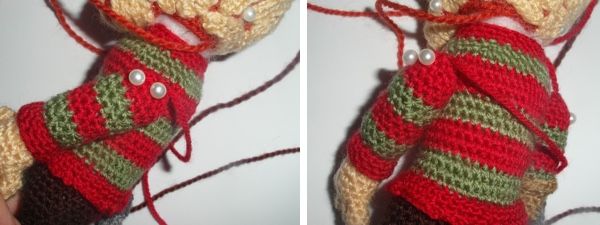
As for the scissors, what can I say? We all know how to use them, right?
We are ready! they are the materials and accessories to crochet amigurumis. But where do we start?
Following entry: Basic stitches to crochet amigurumis.
Share this Post:
[addthis tool=”addthis_inline_share_toolbox_djcd”]







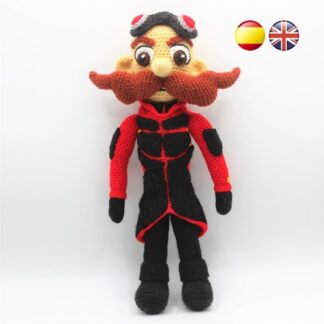




Gracias muy amables por compartir que tengan un hermoso dia
Igualmente! ?